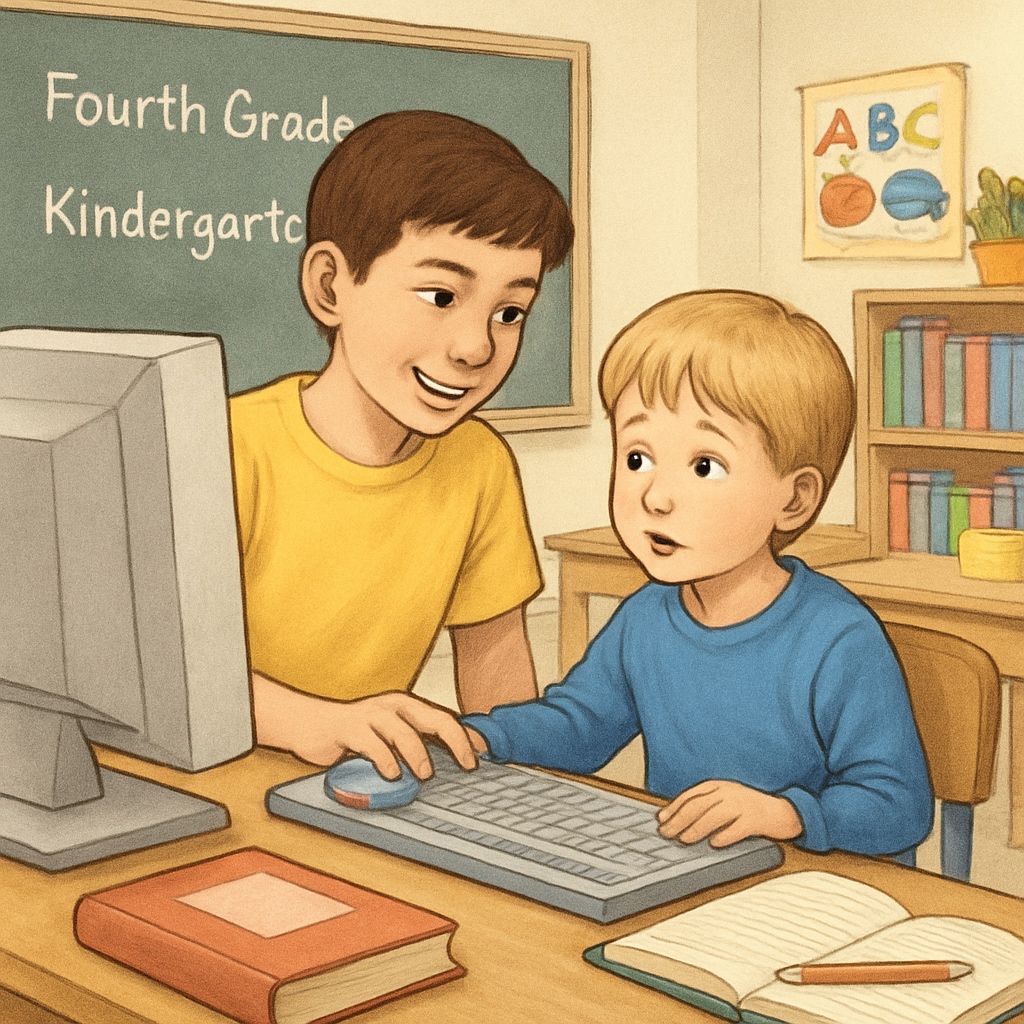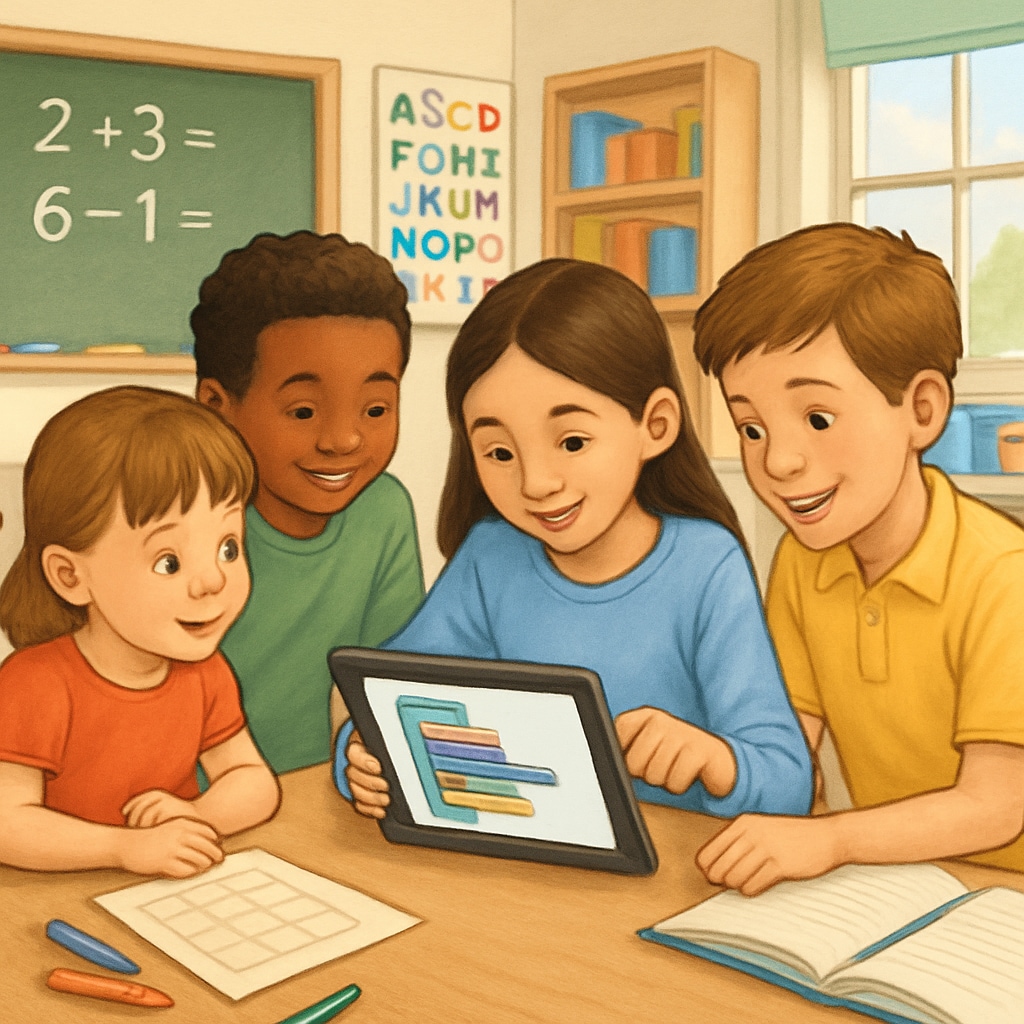Creating meaningful connections between kindergarten and fourth-grade students through structured cross-grade activities can open doors to shared learning, skill development, and social growth. By integrating “kindergarten partner projects, cross-grade activities, and computer skills” into educational designs, educators can foster a sense of responsibility and teamwork among students while nurturing essential skills. In this article, we’ll explore innovative and age-appropriate activities that encourage collaboration between these two distinct age groups.
Why Cross-Grade Collaboration Matters
Cross-grade activities provide unique opportunities for students to engage in intergenerational learning. Kindergarten students benefit from peer mentorship, while fourth-grade students learn leadership and empathy by guiding younger learners. These partnerships not only strengthen social bonds but also enhance academic and technical skills.
For example, when fourth-grade students teach basic computer navigation to kindergarten students, they reinforce their own knowledge while developing patience and communication skills. Younger students, on the other hand, gain confidence and new competencies through guided practice.

Designing Cross-Grade Activities That Blend Technology and Social Skills
Integrating technology and social interaction into cross-grade activities can be both engaging and educational. Below are some ideas to facilitate collaboration:
- Interactive Story Creation: Pair kindergarten students with fourth graders to create digital stories using educational software. Older students guide younger ones through storytelling, typing, and adding illustrations.
- Digital Art Projects: Use drawing apps or tablet software to design collaborative art pieces. Fourth graders can assist kindergarteners in navigating tools while encouraging their creativity.
- Basic Coding Games: Introduce simple coding platforms like ScratchJr. Fourth-grade students can help kindergarteners create basic animations or games, sparking an interest in computer science.
Through these activities, both groups develop technical skills while learning to communicate and share ideas effectively.

Building Responsibility Through Partner Projects
Partner projects serve as a cornerstone for teaching responsibility and teamwork. Fourth-grade students act as mentors and role models, demonstrating patience and problem-solving skills. Meanwhile, kindergarten students learn to trust and rely on their older peers.
One example is designing a “Digital Scavenger Hunt.” Fourth graders create clues and lead kindergarten students through a tablet-based exploration of educational content. This activity not only teaches digital literacy but also encourages teamwork and accountability.
As a result, students develop a sense of accomplishment and mutual respect, laying the foundation for future collaborative experiences.
Ensuring Age-Appropriate Learning Goals
It’s essential to tailor activities to suit the developmental stages of both age groups. Here are some key considerations:
- Keep tasks simple for kindergarteners, while offering leadership opportunities to fourth graders.
- Focus on hands-on learning and interactive tools to maintain engagement.
- Allow flexibility in activities to accommodate varying skill levels.
By carefully balancing the needs of both groups, educators can create a harmonious learning environment that encourages growth and collaboration.
Long-Term Benefits of Cross-Grade Collaboration
Cross-grade activities not only provide immediate educational benefits but also contribute to long-term skill development. Kindergarteners gain early exposure to technology, laying a foundation for future learning. Fourth graders hone leadership and mentoring skills, preparing them for responsibilities in later grades and beyond.
In addition, these activities foster a sense of community within schools, bridging gaps between age groups and promoting inclusivity. For teachers, cross-grade collaboration offers an opportunity to experiment with innovative teaching methods that cater to diverse learning needs.
By implementing well-structured cross-grade activities, educators can create environments where students thrive academically, socially, and emotionally.
Final Thoughts: Cross-grade collaboration, when thoughtfully designed, offers a powerful way to enrich student learning and build lasting connections. By blending technology, social interaction, and responsibility, educators can inspire students to support one another while exploring new skills and perspectives.


